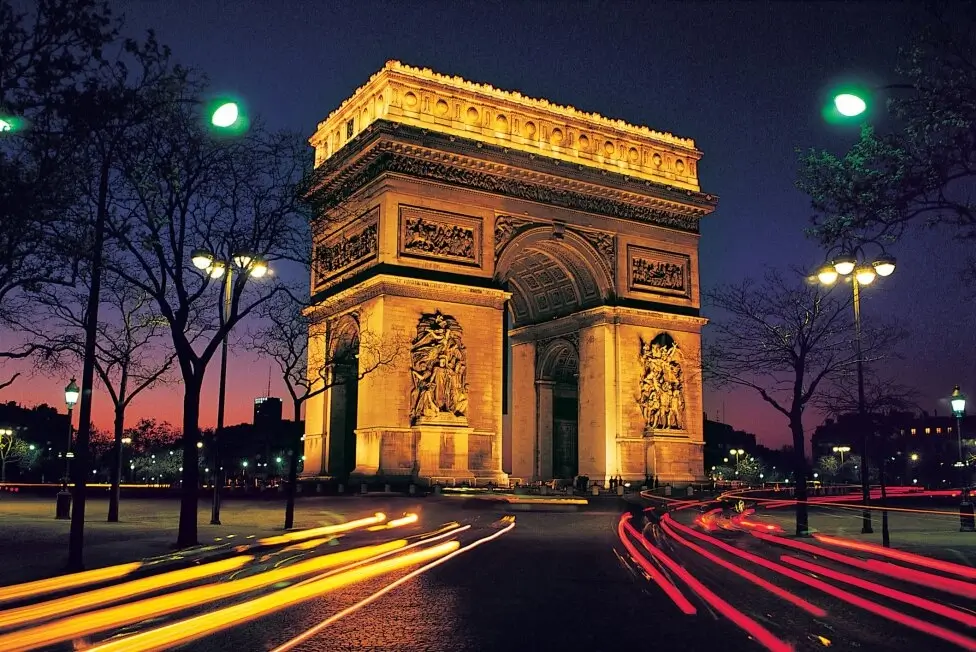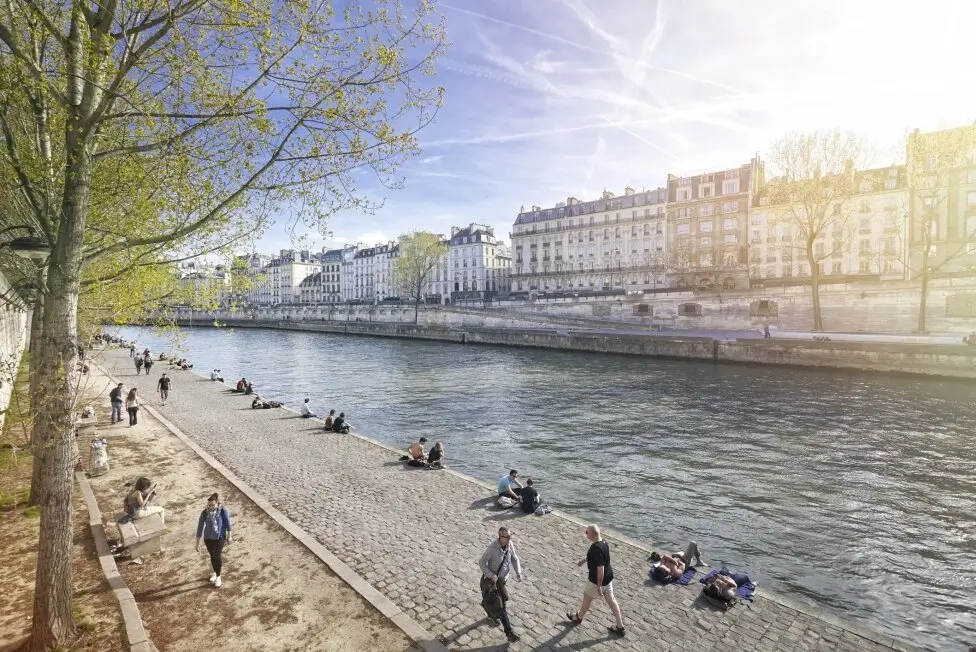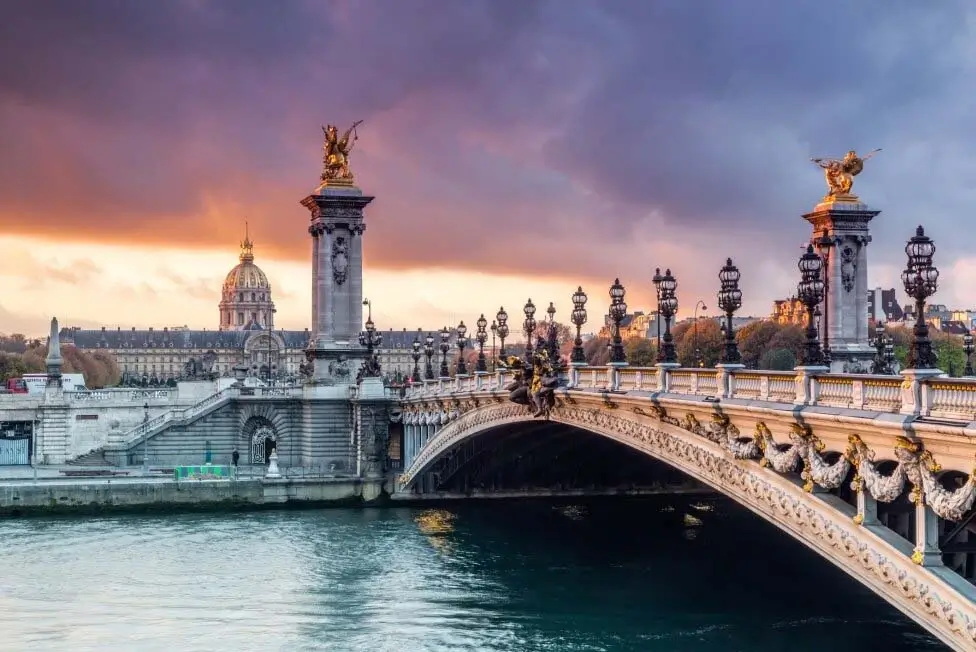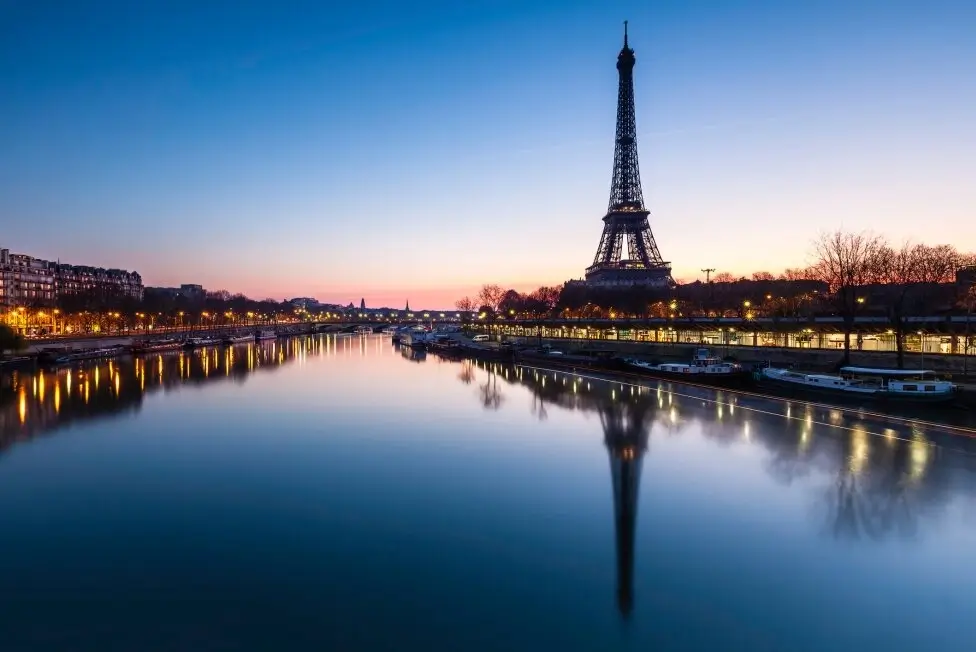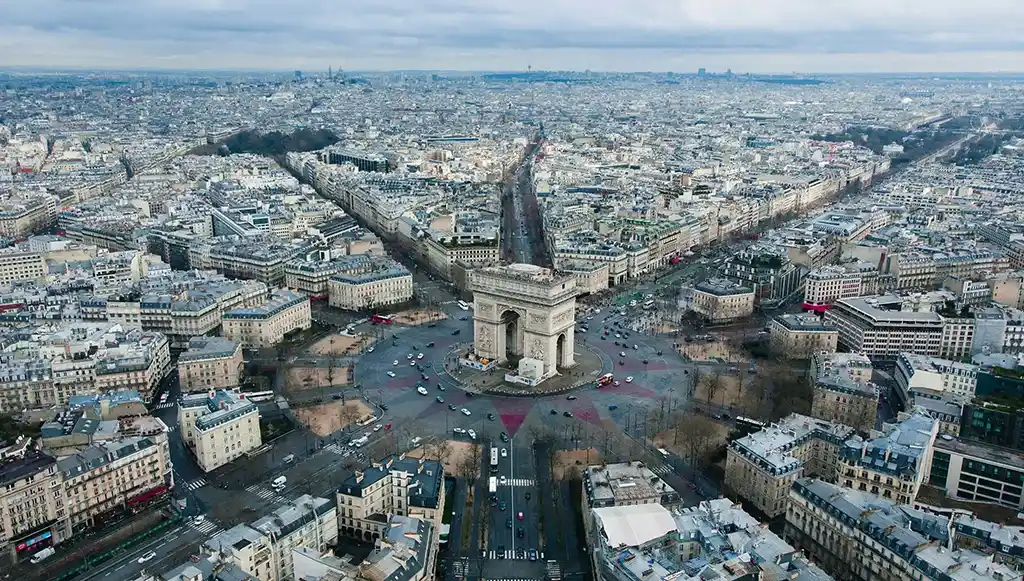
Why Fights To Paris in 2024
The City of Light draws millions of visitors each year with its unique charm. Its delicious cuisine and vast art collections are also major attractions. The gentle River Seine winds through Paris, bordered by grand museums, historic churches, and rows of Rococo and Neoclassical architecture, enhanced by tree-lined streets and glowing lamps. Stylish Parisians, often on their way to markets, cafes, or cinemas, add to the city's allure along the cobbled paths and elegant bridges of the Seine.
Paris is a city of "many splendors," as Ernest Hemingway wrote in "A Moveable Feast." It's known for its world-class museums, fashion, cuisine, and one-of-a-kind atmosphere. Don't miss the beloved Musée d'Orsay, shopping on the Champs Élysées or in Le Marais, the view from the Eiffel Tower, or a day trip to Versailles Palace. And remember to enjoy the simple pleasures of strolling through the city's beautiful districts and tasting street crepes.
When planning your trip, consider booking business class flights to Paris for a luxurious and comfortable journey. With many options for flights to Paris, you can find the perfect itinerary that suits your needs and lets you fully enjoy all that this magical city has to offer.
Best Months to Travel to Paris
The ideal times to visit Paris are from June to August and September to October, each season offering its own advantages. During the summer months of June to August, the weather is nearly perfect, with average highs in the upper 70s and long, sunny days. However, this period is also the busiest and most expensive. For those looking to avoid the crowds and enjoy lower travel costs, fall is a great alternative. The autumn foliage is breathtaking, rivaling the city's famous spring blooms. If you're looking for the best travel deals, consider visiting during the winter, when travel expenses are significantly reduced. Keep in mind that Paris attracts over 30 million visitors annually, making it one of the most visited cities in the world. Therefore, expect some level of tourism and crowds no matter when you choose to visit.
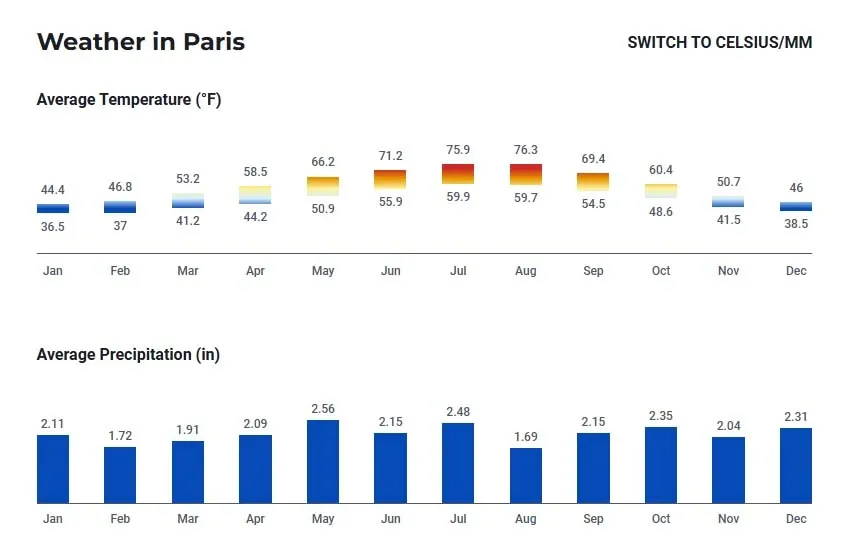
How to Save Money in Paris
Grab breakfast at the boulangerie: Sitting down at restaurants in Paris, especially those with outdoor seating, tends to be more expensive than getting your food to go. Bakeries, or boulangeries, often sell quiche and light sandwiches, making them perfect for a quick and affordable meal.
Visit on the first Sunday of the month: While it might be tricky to plan, visiting Paris on the first Sunday of the month can save you admission fees at several top attractions, including the Louvre, Musée d'Orsay, parts of the Centre Pompidou, Versailles, and Musée Rodin.
Explore on foot: While Paris is a large city, many of its top attractions are within a mile of each other, such as the Musée d'Orsay, the Louvre, and Notre Dame. By mapping out the distances between attractions in advance, you can save on metro fares and enjoy a pleasant walk through the city.
Culture and Customs
There’s a common misconception that Parisians are unfriendly or even rude to Americans, but this is just a stereotype. As with any place you visit, you'll encounter both friendly and unfriendly locals. One effective way to bridge the cultural gap is to learn a bit of the local language. While many Parisians speak English, especially in tourist areas and hotels, making an effort to speak French can go a long way. French culture values pleasantries, so a simple "bonjour" (hello or good day) or "bonsoir" (good evening) can show that you’re making an effort, which the French appreciate, and can enhance your cultural experience. "Merci" means thank you, and "s'il vous plaît" means please. If you need help, you can politely ask, "Pouvez-vous m'aider?" (Can you help me?) or "Parlez-vous anglais?" (Do you speak English?). Another useful phrase is "Excusez-moi" (pardon or excuse me). In social situations, if you're introduced to French people, stick to a handshake unless they initiate "les bises" (a light kiss on the cheek). If you're not comfortable, simply offer your hand for a handshake.
Paris is renowned for its fashion, with icons like Coco Chanel, Yves Saint Laurent, and Christian Lacroix having started their careers there. To blend in, dress stylishly but comfortably. While Parisians do dress casually, activewear, sweatshirts, running shoes, flip flops, or denim cut-offs are not as common in the city as they are in the U.S. Parisians prefer simple and chic attire, such as a black leather bag over logo-laden designer bags, and soft, understated colors over neon. France uses the euro, and most establishments in Paris accept major credit cards. Since the euro to U.S. dollar exchange rate fluctuates, check the current rate before you go and keep it in mind when tipping and making purchases. Some smaller bakeries or bistros may only accept cash, so keep some euros on hand. Most restaurants and cafes include a 10 to 15 percent service charge (service compris) on the bill, but you can leave extra change for exceptional service if you wish. Taxi drivers typically expect a 5 to 10 percent tip, though rounding up to the nearest euro usually suffices. You might also encounter fees to use the bathroom in some restaurants and attendants in many bars. If the fee isn’t collected in advance, it’s polite to leave 50 cents to a euro for the attendants.
Delicious Foods To Try
Like many other global cities, Paris boasts a wide variety of restaurants offering everything from Asian fusion to contemporary bistro fare. France is renowned for its culinary traditions, so the food in Paris is exceptional. You'll find upscale dining options in the 1st arrondissement, Marais, and around Champs-Elysées and the Eiffel Tower. For more budget-friendly eateries and cafes, check out the 2nd arrondissement and Montmartre. Regardless of where you dine, make sure to try some French classics like soupe à l'oignon gratinée (French onion soup), croque-monsieur (a grilled cheese and ham sandwich topped with melted cheese), steak frites (steak and fries), and coquilles St-Jacques (seasoned scallops with cheese and breadcrumbs served in a shell). If you have a sweet tooth, don't miss desserts like macarons, pain au chocolat (chocolate croissants), puits d'amours (puff pastries with vanilla cream and caramel), or crêpes with various fillings such as Nutella, bananas, and berries.
For a quick meal, grab a baguette sandwich at a traiteur or a savory crêpe from a crêperie or street stand. Enjoy drinks like chocolat chaud (hot chocolate) or café crème (coffee with cream) at one of the city's many cafes. To save money, visit a local grocery store for snacks. While there are many affordable bistros and brasseries, for a fine dining experience, consider splurging at Guy Savoy, Bistrot Paul Bert, or Chez André. Julia Child, a famous foodie, wrote "Mastering the Art of French Cooking" because preparing French meals is an art. Perfecting French specialties like wine, cheese, and pastries reflects the time and care put into each meal. Enjoy your French dining experience by savoring each bite and remember, elbows off the table! For an immersive introduction to Paris's dining scene, consider joining a guided food tour.
Travel Around Paris
The best way to explore Paris is on foot and by metro. The elegant arrondissements are perfect for walking, but since Paris is quite large, you'll want to use the efficient metro system for longer distances. The Régie Autonome des Transports Parisiens (RATP) operates the metro and also offers several bus routes throughout the city. If you're flying into Paris, you can arrive at Charles de Gaulle Airport (CDG), located about 22 miles northeast of the city center, or Paris Orly Airport (ORY), approximately 11 miles south of the city. From CDG, you can reach Paris by taking a bus (No. 350 or No. 351), an RER train (with airport shuttles from CDG to the Terminal 2 RER station and nearby Roissypole RER), or the RoissyBus. If you arrive late, the Noctilien night bus runs from midnight to 4:30 a.m. From ORY, you can take an airport shuttle to the nearest RER station (Pont de Rungis) or the Orlyval shuttle train to the Antony RER station, both of which go directly to Paris. Taxis are another option, though they can be expensive, costing between 30 and 55 euros (about $33 to $61). Driving is generally not recommended. If you're traveling to Paris from other French or European cities, taking the train is a convenient option. SNCF rail and TGV high-speed trains run throughout France and to other European countries. Paris has six main train stations, which also serve as bus stops and metro stations, making it easy to get from the station to your hotel. You can also take the Eurostar through the Channel Tunnel (the "chunnel") from London.
Entry and Exit Requirements
U.S. residents traveling to Paris need a United States passport, including children of all ages. The passport must be valid for at least three months beyond your planned departure date. U.S. citizens do not need a visa for stays shorter than 90 days. For the most up-to-date information on entry and exit requirements, check the U.S. State Department's website.
Blog

